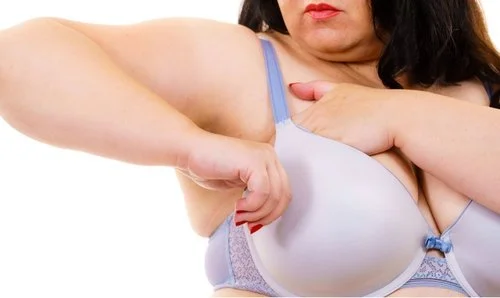Sports Bras: what you need to know

Running bras aren’t just for looking cute. They’re an essential piece of gear that can make or break your comfort and performance, especially if you have larger breasts.
Did you know that *80%*—yes, *80%*—of women are wearing the wrong size sports bra?
Why does this matter?
Wearing a poorly fitting sports bra can:
- Put you at risk for breast tissue damage
- Cause pain and discomfort
- Reduce your running and jumping efficiency
- Stop many women and teens from participating in sports altogether
In fact, some women opt for breast reduction surgery because of the discomfort, even though a properly fitted bra can often provide a non-surgical solution.
Plus, most women experience changes in breast size, shape, and comfort throughout their menstrual cycle. This means you might need different bras for different phases, or consider dialing back high-impact activities during particularly painful days.
Benefits of a Well-Fitting Running Bra:
1. Pain Reduction
A good bra reduces bounce, chafing (nipple chafe is no joke!), and skin abrasions. It’s also been shown to reduce breast, neck, back, and shoulder pain. There’s even some evidence to suggest that a well-fitted sports bra can lower the risk of musculoskeletal injuries, not just damage to breast tissue.
2. Prevent Damage to Cooper’s Ligaments
Cooper’s ligaments hold your breasts in place, but if they get stretched out, they can be permanently damaged. This can lead to sagging over time and potential pain. A supportive bra protects these ligaments, as well as the breast fascia and tissue that can also be sources of discomfort.
3. Stay Cool and Dry
A well-fitting bra keeps your back, breasts, and shoulders dry, reducing the risk of chafing, skin irritation, and even infections. Breathable fabrics wick away sweat, which helps keep bacteria at bay—meaning less post-run odor and skin breakdown.
4. Improved Endurance
The University of Portsmouth Research Group in Breast Health (how cool is it that this exists?!) found that the type of bra you wear can actually change the way you run. A snug, well-fitted sports bra can make a noticeable difference in your endurance and running form.
Your bra should be snug around the torso but not so tight that it restricts movement. A poorly fitting bra can restrict arm swing, chest rotation, and even your breathing mechanics—forcing you to take smaller breaths and making your run less efficient.
How to Ensure Your Running Bra Fits:
Getting your sports bra professionally fitted is ideal, but if that's not an option, here are 5 steps to fit one yourself:
1. The Underband
This is where most of the support comes from. It should sit snugly against your body—enough that you can fit two fingers under the band, but no more. If the underband is too tight, it will dig in and cause discomfort. Too loose, and it will ride up, offering little support. As you move your arms, make sure the underband stays in place and doesn’t wiggle up or sag.
2. The Cups
Your breasts should be fully enclosed within the cups—no spillage, bulging, or gaps. If there’s wrinkling or bunching, the cup is too big, which means less support. Too much spillage means it’s too small.
3. The Underwire
If your bra has an underwire, it should sit comfortably along the natural crease of your breasts, not on top of the breast tissue. The wire should lay flat against your sternum. Any rubbing or discomfort means the fit isn't quite right.
4. The Center Front
The center of the bra, where the underwire meets the sternum, should sit flush against your body. If it lifts away, the cup may be too small.
5. The Straps

Straps should be snug but not dig into your shoulders. If they’re doing all the heavy lifting, it’s a sign that the band isn’t supportive enough. Don’t worry if the straps aren’t the same length on both sides—many women have asymmetrical breasts or shoulder muscle imbalances.
Important note:Your breast size and shape can fluctuate throughout your cycle. A bra that fits well today might not in a couple of weeks, but it should fit again when you’re back to that phase of your cycle. Keep that in mind when choosing bras.



